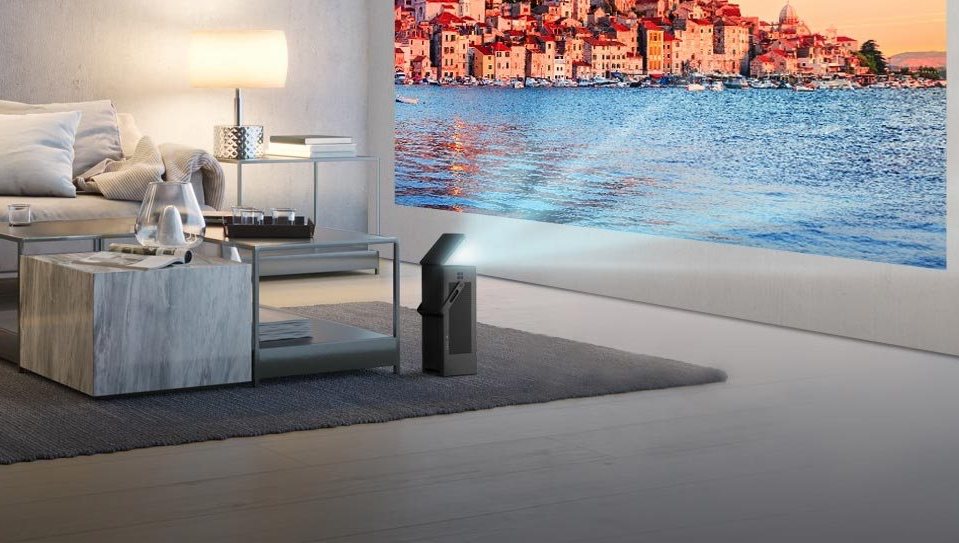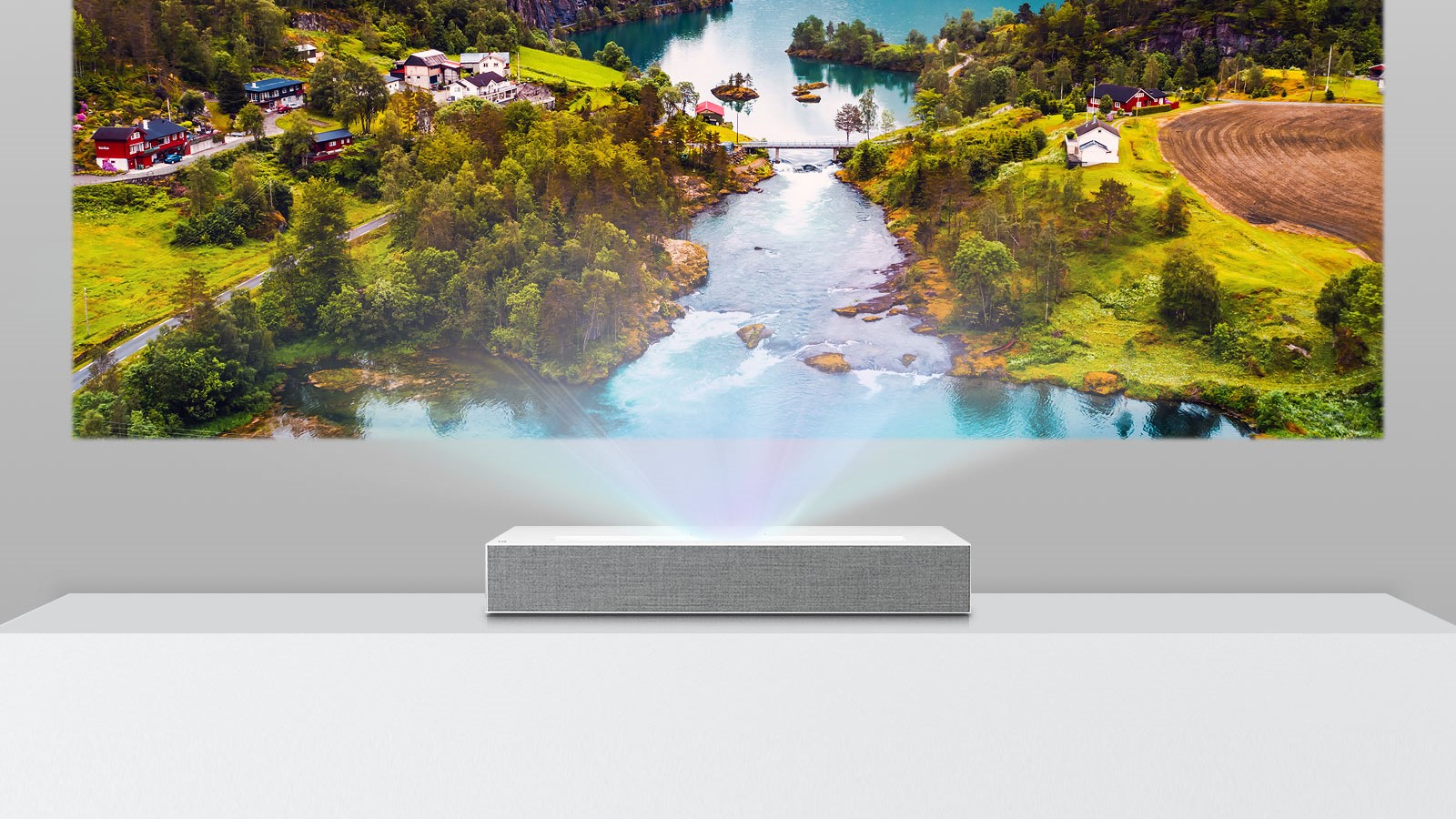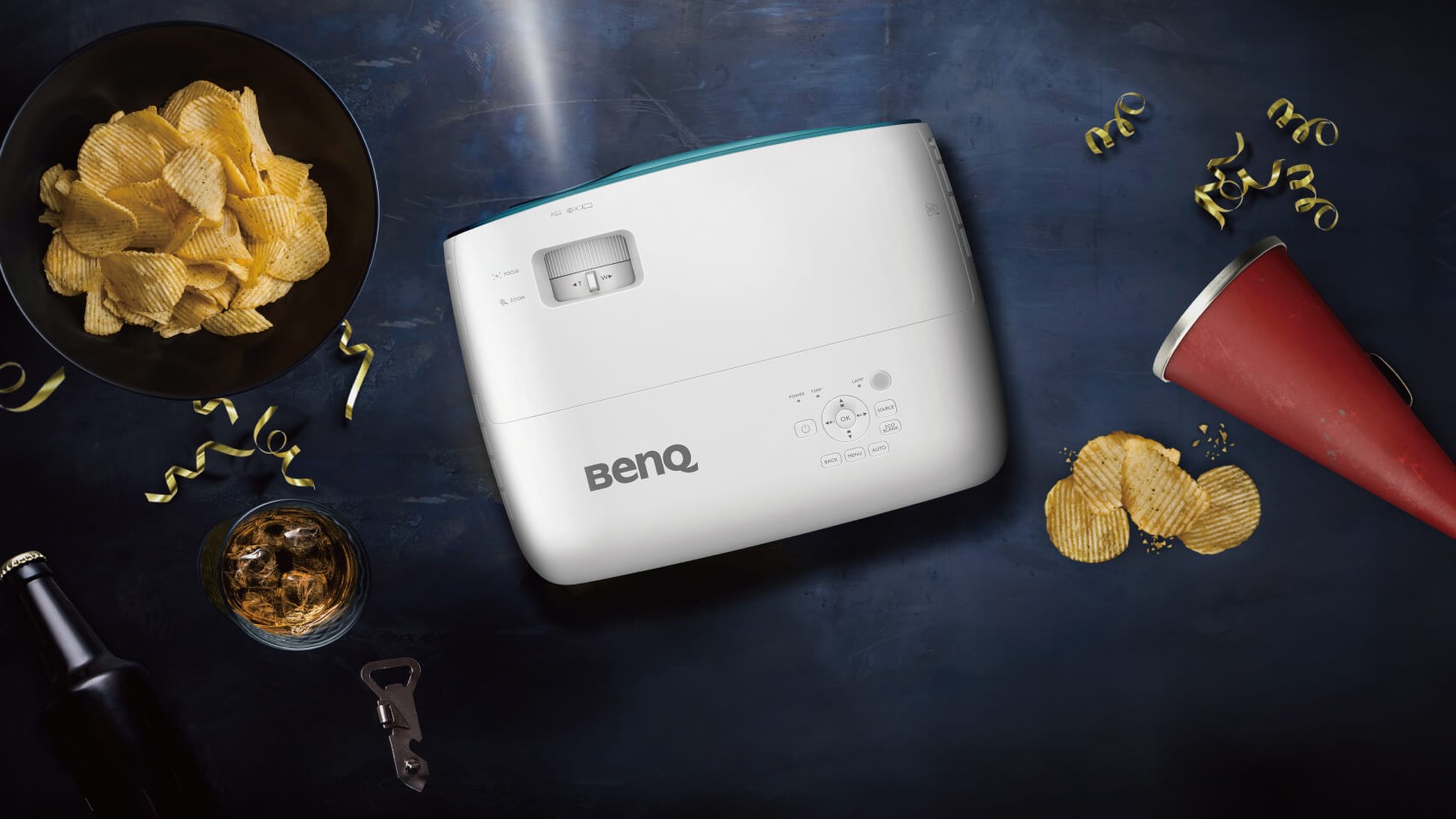Best projectors

Projectors are important in any home cinema set-up. Although the best TVs can't be beat for delivering true 4K HDR content, you're unlikely going to get a picture bigger than 75 inches – well, unless you want to refinance your house or move into a mansion.
But 75 inches is only the beginning if you have a good projector.
Whether you want to splash Blu-ray movies across a large white wall, magnify your gaming experience, or throw photos and slides from a mobile device onto a 100-inch plus screen, a home cinema projector should be your first choice.
Unfortunately, while most AV enthusiasts dream of the day they bring home a beamer for their living room, few tend to follow through. They have the misconception that projectors are hard to set up (they're not), hard to maintain (they're not) and cost significantly more than a TV (they don't).
To that end, we want to dispel the myths perpetuated by non-cinephiles out there and help you pick a fantastic-looking projector without breaking the bank. To that end, we've rounded up the best projectors we tested throughout the last year or two and have ranked them below.

LG CineBeam HU80KSW 4K projector
Reasons to buy
After a five-star projector? The LG CineBeam HU80KSW offers a crisp 4K HDR picture, with the benefit of a truly all-in-one system you'll find a lot more compact than your average smart TV. It may have more of a neutral pallet than some more vivid projectors out there, but for the all-round package and quality, you can't do much better.
Everything from the speakers to the power plug is built into the projector itself, making for a tidy and well-designed product that's wonderfully easy to move around the room or house. While there are physical ports for external media players, too, the on-board LG smart platform can get you streaming from any of your catch-up apps with ease.
Sign up for breaking news, reviews, opinion, top tech deals, and more.
This CineBeam model boasts and impressive 2,500 Lumens, and should last you 20,000 hours before the image starts to degrade – while the Harman Kardon speakers ensure you're getting a base quality of the audio (even if it will pale compared to a dedicated soundbar). This is a projector that's absolutely worth the price.


LG HU85LA CineBeam Projector
Reasons to buy
Really need a projector that can sit right up to the wall? This ultra short-throw CineBeam projector from LG is able to project a massive display from only inches away.
You're paying a lot more than the model above, with a price tag befitting the increased convenience and advance technology required to project at such a short distance.
The projector itself is also brilliantly sharp in its construction, with a sleek rectangular profile that can hub your living room carpet or coffee table without obstructing any of the image it's throwing up on the wall – and you can install it from the ceiling as well if preferred.
At 2.2 inches away, the projector will deliver a 90-inch screen size, while at 7.2 inches, you’ll get a 120-inch projection. The sound quality maybe isn't as impressive as the projection, though, with a lack of detail in high frequencies, and not much power on the low end either.


BenQ HT3550 (2019)
Specifications
Reasons to buy
We reviewed the predecessor to the HT3550, the BenQ HT2550, late last year, and to great results, but its sequel offers a few great new features: It has a beautiful new design, for starters, but it’s also optimized for BenQ’s HDR-PRO, which supports HDR10 and HLG, plus it zooms up to 1.3 times, and supports a screen size of up to 120 inches with a brightness of up to 2,000 Lumens.
The real upgrade here, however, is the projector’s contrast ratio. While the HT2250 offered a 10,000:1 contrast ratio, the HT3550 steps that up to an impressive 30,000:1 - and the result is a super dynamic image.
While it might have been nice if the projector could get slightly brighter, given the fact that with enough ambient light it can put a serious damper on the overall image quality, we think the BenQ HT3550 is arguably the best way to go if you’re looking for a great mid-range projector.


BenQ HT2550
Specifications
Reasons to buy
The BenQ HT2550 may look a bit pricey to someone used to seeing discount 4K TVs, for the price you can’t do much better. The projector boasts vivid, clear colors, plenty of detail, and a 4K resolution. That’s no small feat.
The projector isn’t perfect – the blacks on offer aren’t as deep as we might have liked, the projector still creates some fan noise and there’s also no lens shift – but those small downsides aside, we think the BenQ HT2550 is an excellent option for those that want a solid, no-frills projector with support for a 4K resolution and HDR content.
Are there better options? Well, there’s the Optoma UHD50, which is cheaper and offers much of the same perks (though color accuracy isn’t quite as good, and the BenQ projector is slightly better-built) but in the end, we think it’s better to spend the extra money for the BenQ HT2550.


Anker Nebula Capsule II Mini Projector
Reasons to buy
Some projectors were meant to be portable – and few do it better than the Anker Nebula Capsule II Mini Projector.
About the size and shape of a can of Coca Cola, the tiny projector looks more like a battery pack for a piece of AV equipment than an all-out projector, but those looks are deceiving. The Capsule II is very capable for its size, offering a 720p (HD) resolution and strong audio output – and a noticeable improvement on 2018's Anker Nebula Mars II – even if it can't compete with the more premium 4K HDR models listed in this guide.
Given its size, we were pleasantly surprised to find a full-sized HMDI port, too, rather than the mini-HDMI alternative – as well as a USB port and USB-C charging port, allowing you to power the projector while connecting to a streaming stick like the Roku Express or Amazon Fire TV Stick.
There's also 3,600 apps to make use of, all pre-built into the Android TV smart platform. However, given some tricky certification issues around Netflix, you won't get the biggest TV streaming service on there unless you connect and external device to do it for you.


BenQ TK800
Specifications
Reasons to buy
Like the HT2550, the main selling point of the BenQ TK800 is that it supports faux-4K by using XPR technology that essentially takes a 1920x1080 pixel DLP chip and flashes the image four times in incredibly fast succession to create an image with a perceived resolution of over eight million pixels.
Amazingly, this actually works, and even with test patterns the images appear to be 4K in terms of resolution.
What's different about it is that it's also really bright, which means that even with SDR content it can deliver images that have genuine impact, even in less-than-ideal conditions. As such you can use the TK800 in a room with white walls or big windows, and still enjoy a huge projected image.
Also expect excellent motion handling, which is great for gaming, and it has a low input lag which is also good news for gamers. The BenQ even supports 3D, although you will need to buy the glasses separately.
On the debit side, the black level and the shadow detail are both poor, and the TK800 also uses a color wheel, which restricts its range of colors, especially where HDR is concerned. It also means that certain people will see ‘rainbows’, but that’s just a limitation of single-chip DLP projectors. On top of all that, it's quite noisy thanks to both the color wheel and a fan, although the latter is necessary given the amount of heat generated by the bright bulb.


Anker Prizm II
Reasons to buy
Possibly the cheapest projector on this list, the Anker Prizm II guns for an affordable experience that manages to maintain a degree of quality for the price – even if it lags behind in the looks department.
Yes, the Anker Prizm II is a bit bulky, and lacks the sleek design of the LG CineBeam range, or even the Anker Nebula Capsule II. But it makes up for that with a lower price tag, easy-to-angle projection, and better sound quality than its visage would suggest.
It's not all upsides, of course. As a comparatively budget projector, it only has a single HDMI port, and generally struggles to output bright enough to compete with other light sources in the room. If you're only watching in a dark environment, though, and are buying a new projector on a restrictive budget, this could be the projector for you.

Epson Home Cinema 4010
Specifications
Reasons to buy
This very large projector is based around Epson's own 3LCD engine and it deals in 4K, HDR 10, 3D, it has an electronic lens, an auto-focus system, and it can reach 2,400 Lumens brightness.
What prevents this from being higher on our list is that doesn't offer the greatest feature-set around – even Epson offers models with more bells and whistles (notably its step-up EH-TW9400, which adds Hybrid Log Gamma, 4K/60p HDR at 18Gbps, and Epson's 4K WiHD wireless transmitter), nor is as ultra-detailed as native 4K projectors – but the massive 4010/EH-TW7400's combination of must-have features and uncompromisingly cinematic images is impossible to argue with.

Nick Pino is Managing Editor, TV and AV for TechRadar's sister site, Tom's Guide. Previously, he was the Senior Editor of Home Entertainment at TechRadar, covering TVs, headphones, speakers, video games, VR and streaming devices. He's also written for GamesRadar+, Official Xbox Magazine, PC Gamer and other outlets over the last decade, and he has a degree in computer science he's not using if anyone wants it.